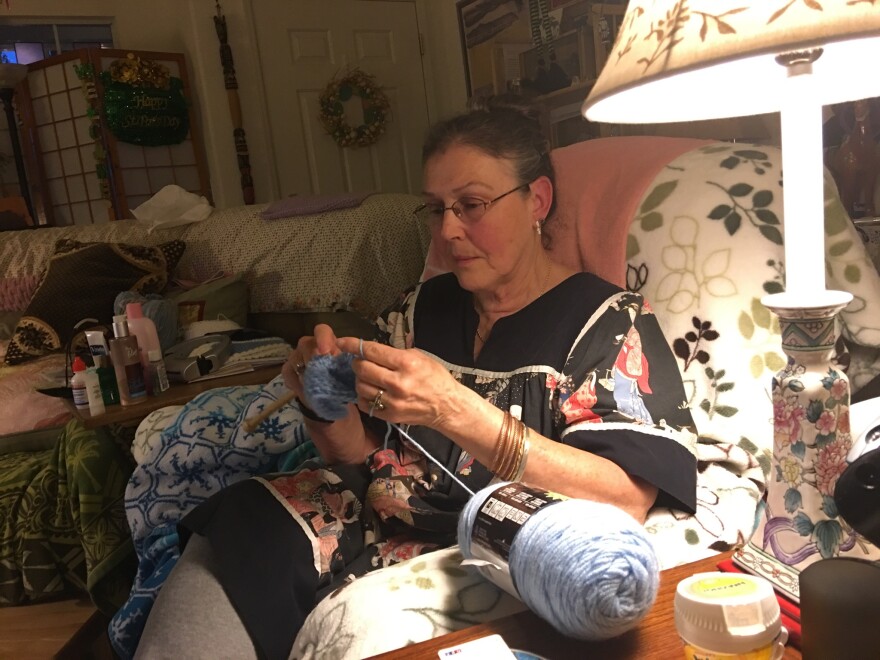After years of clean-up efforts and some notable progress, air in the San Joaquin Valley is still among the worst in the nation. Now there’s a new goal for cleaning up particulate pollution from things that create dust and exhaust. FM89’s Ezra David Romero reports the effort has reached a new phase thanks to intervention from the state.
We all have to deal with the effects of air pollution but it's especially bad for people like 72 year old Janet Dietzkamei. It’s so bad she can’t leave the house without taking major precautions or she’ll have an asthma attack.

“The best way I can describe it is you know how a fish is when you take it out of the water gulping for I guess you would say air,” Dietzkamei. “That’s how I feel.”
The asthma attacks started in 2005, two years after Dietzkamei and her husband moved to Fresno. She says the attacks are provoked by tiny particles in the air called PM 2.5 emitted from a range of sources like cars, fire, dairies and dust.
“I didn’t have asthma before here,” says Dietzkamei. “I had allergies, but I never had where I couldn’t breathe. That’s new. This is something that happens to regularly here in the Valley.”
Its stories like hers that groups nationally, statewide and locally would like to see change. But to get there they have a lot of work to do. Right now there’s different three standards for reducing PM2.5. If they’re not met the region could be hit with huge fines and sanctions. Earlier this year, the San Joaquin Valley Air Pollution Control District tried to combine the standards into a plan that mainly focused on reducing pollution from cars and trucks. Seyed Sadredin leads the district.
“Trucks are the biggest source of air pollution in the San Joaquin Valley, about 50 percent of our pollution,” Sadredin says. “So we want ARB and EPA to provide funding for us to go there and help truck owners replace their trucks.”
"This is an unprecedented opportunity to really look at some of the asks that advocates have been making for over 10 years that have been ignored locally." - Dolores Weller, Central Valley Air Quality Coalition
But this fall the state sent them back to the drawing board to find additional ways to reduce PM2.5.
“That final increment to bring the Valley into attainment is really going to take looking at where we can get reductions from a broad diversity of sources,” says Karen Magliano with the California Air Resources Board or ARB. “Not only mobile sources but from those stationary sources as well.”

When ARB told the district they could do more than just focus on mobile sources air advocates like Dolores Weller with the Central Valley Air Quality Coalition were pumped.
“This is an unprecedented opportunity to really look at some of the asks that advocates have been making for over 10 years that have been ignored locally,” Weller says.
Weller says their list includes things like stricter rules on stationary sources of pollution from things like restaurant charbroilers, glass factories and ammonia releases from dairies.
The air district says it is going to study all of the options under the 2017 Integrated PM2.5 Plan. Beginning in January the district will host a series of meetings to develop a new plan, which it hopes to finish around August. Weller says she’s optimistic the different sides can find a solution.
“Our process is going to make sure that it's done to a degree that is effective,” says Weller.

But not everyone likes the idea of more reductions. Manuel Cunha with the Nisei Farmers League in Fresno says he is for regulations on mobile sources but isn’t for other restrictions because they’re too expensive.
“Wait a minute how’d can environmentalists tell us how to plant a crop,” Cunha says. “If they don’t want agriculture fine then let’s bring it in by the containers, from foreign countries. Here’s the thing I’ve 365 small farmers.”
But for residents of the Valley like Janet Dietzkamei it's imperative that air becomes healthy to breath here. At the moment it’s raining and this is one of the rare occasions Dietzkamei can go for a walk outside without having an asthma attack.

“Oh! I smell clean. It’s like I can smell the grass and the leaves,” Dietzkamei says.
She says the last time she was able to go for a walk uninhibited was during a storm in mid-October. As we walk further Dietzkamei breathes deep and all of sudden becomes alerted by something.
“Now I’m smelling smoke so I’m going to have to go another direction,” Dietzkamei says. “It’s a trigger, I have to turn around.”
And its reasons like her having to exercise in the rain that makes her hope the air district quickly comes up with a plan to get the particulate matter that throws her body into shock under control.







